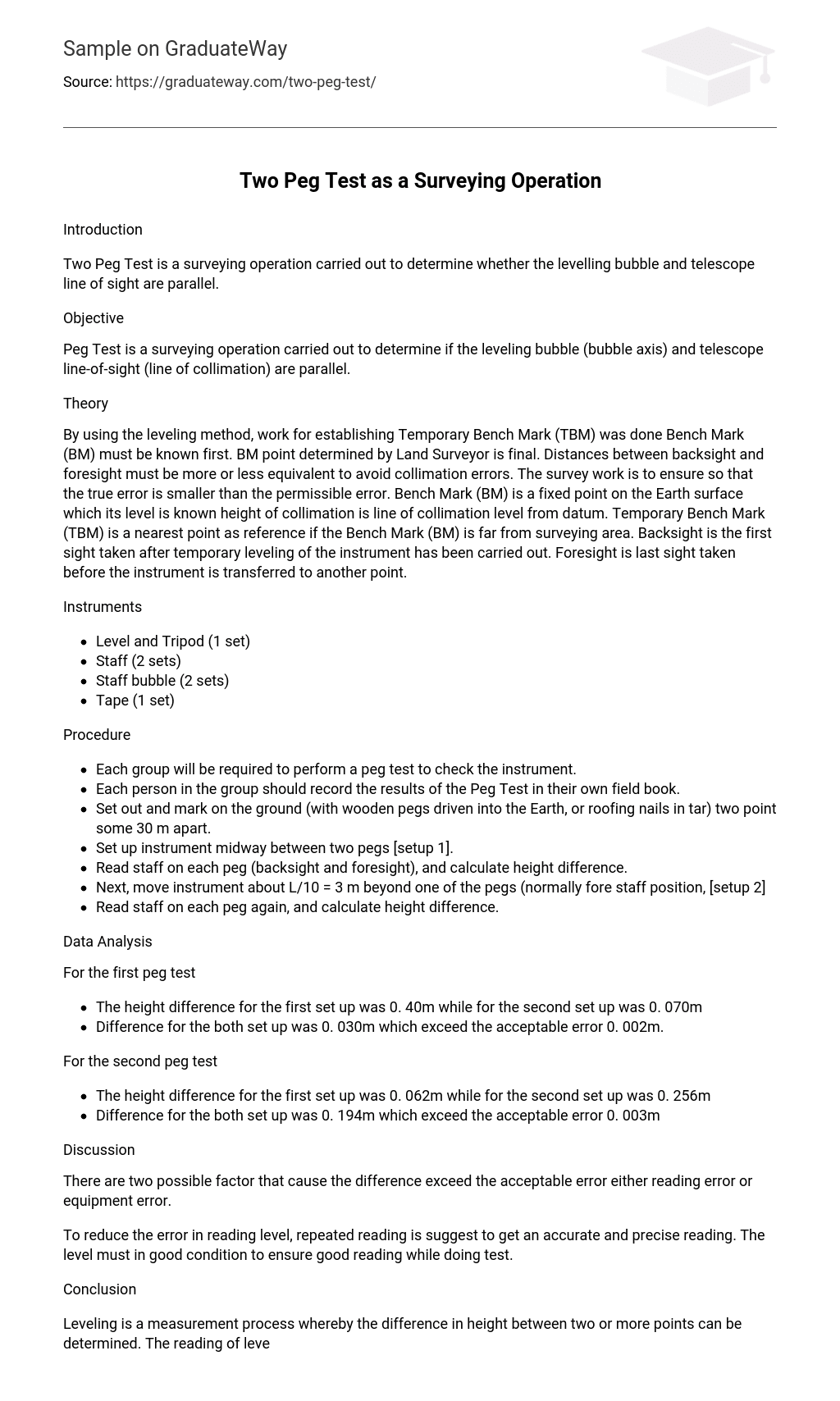Introduction
Two Peg Test is a surveying operation carried out to determine whether the levelling bubble and telescope line of sight are parallel.
Objective
Peg Test is a surveying operation carried out to determine if the leveling bubble (bubble axis) and telescope line-of-sight (line of collimation) are parallel.
Theory
By using the leveling method, work for establishing Temporary Bench Mark (TBM) was done Bench Mark (BM) must be known first. BM point determined by Land Surveyor is final. Distances between backsight and foresight must be more or less equivalent to avoid collimation errors. The survey work is to ensure so that the true error is smaller than the permissible error. Bench Mark (BM) is a fixed point on the Earth surface which its level is known height of collimation is line of collimation level from datum. Temporary Bench Mark (TBM) is a nearest point as reference if the Bench Mark (BM) is far from surveying area. Backsight is the first sight taken after temporary leveling of the instrument has been carried out. Foresight is last sight taken before the instrument is transferred to another point.
Instruments
- Level and Tripod (1 set)
- Staff (2 sets)
- Staff bubble (2 sets)
- Tape (1 set)
Procedure
- Each group will be required to perform a peg test to check the instrument.
- Each person in the group should record the results of the Peg Test in their own field book.
- Set out and mark on the ground (with wooden pegs driven into the Earth, or roofing nails in tar) two point some 30 m apart.
- Set up instrument midway between two pegs [setup 1].
- Read staff on each peg (backsight and foresight), and calculate height difference.
- Next, move instrument about L/10 = 3 m beyond one of the pegs (normally fore staff position, [setup 2]
- Read staff on each peg again, and calculate height difference.
Data Analysis
For the first peg test
- The height difference for the first set up was 0. 40m while for the second set up was 0. 070m
- Difference for the both set up was 0. 030m which exceed the acceptable error 0. 002m.
For the second peg test
- The height difference for the first set up was 0. 062m while for the second set up was 0. 256m
- Difference for the both set up was 0. 194m which exceed the acceptable error 0. 003m
Discussion
There are two possible factor that cause the difference exceed the acceptable error either reading error or equipment error.
To reduce the error in reading level, repeated reading is suggest to get an accurate and precise reading. The level must in good condition to ensure good reading while doing test.
Conclusion
Leveling is a measurement process whereby the difference in height between two or more points can be determined. The reading of leveling need to be precise and accurate to avoid problem in future in case if you build a facilities or building. Repeated reading is the suitable way to avoid error and the way you set up the leveling need to be careful and follow the procedure on how to set up a level.
References
- www. civil. uwaterloo. ca/courses/enve100/lecture_130999. doc





